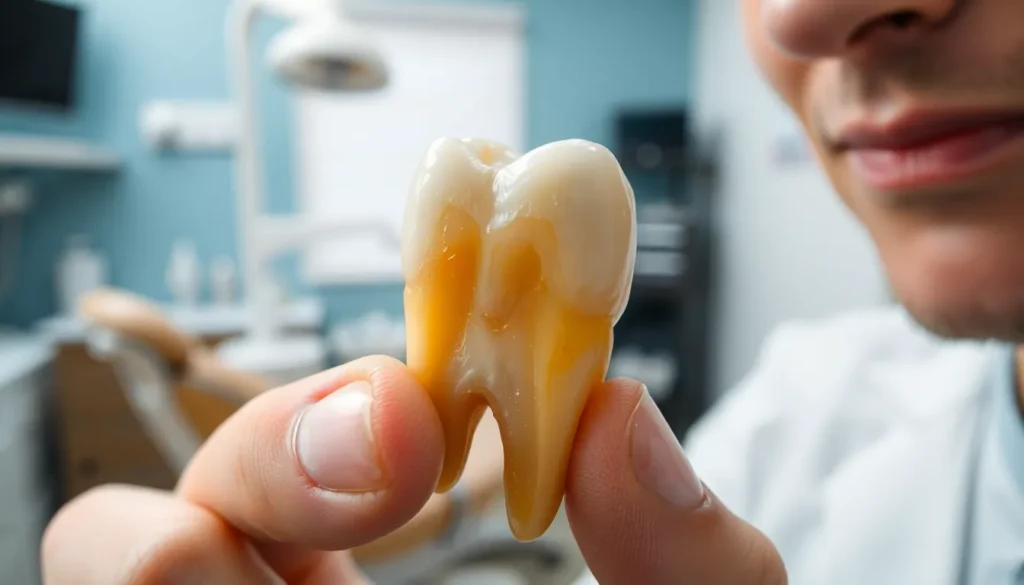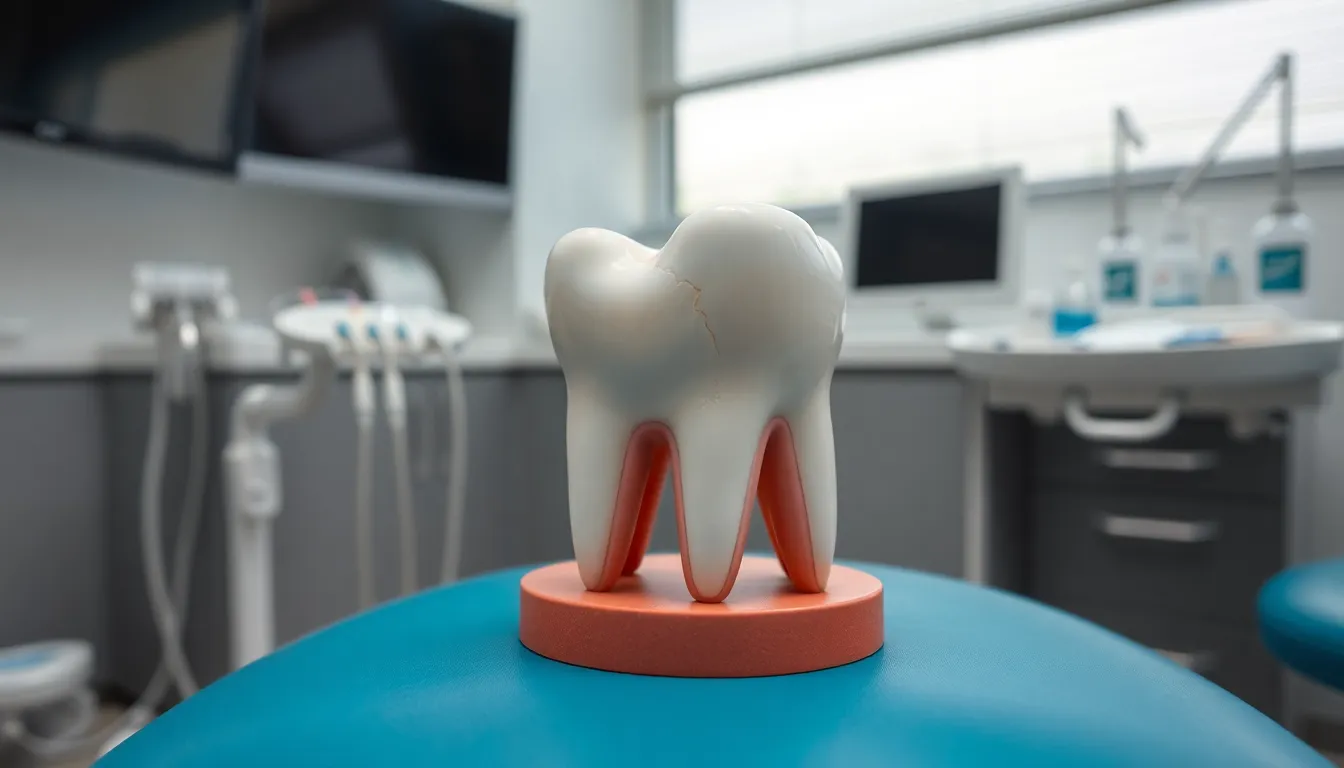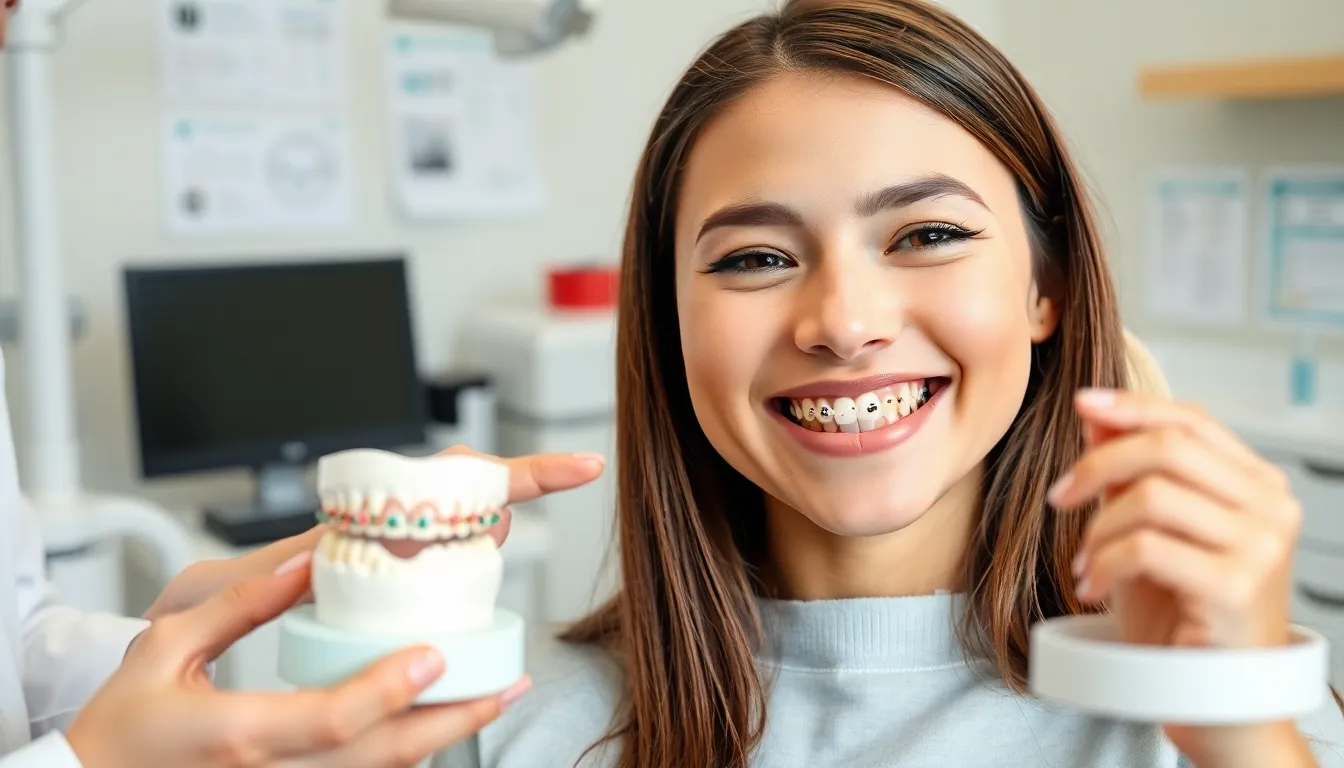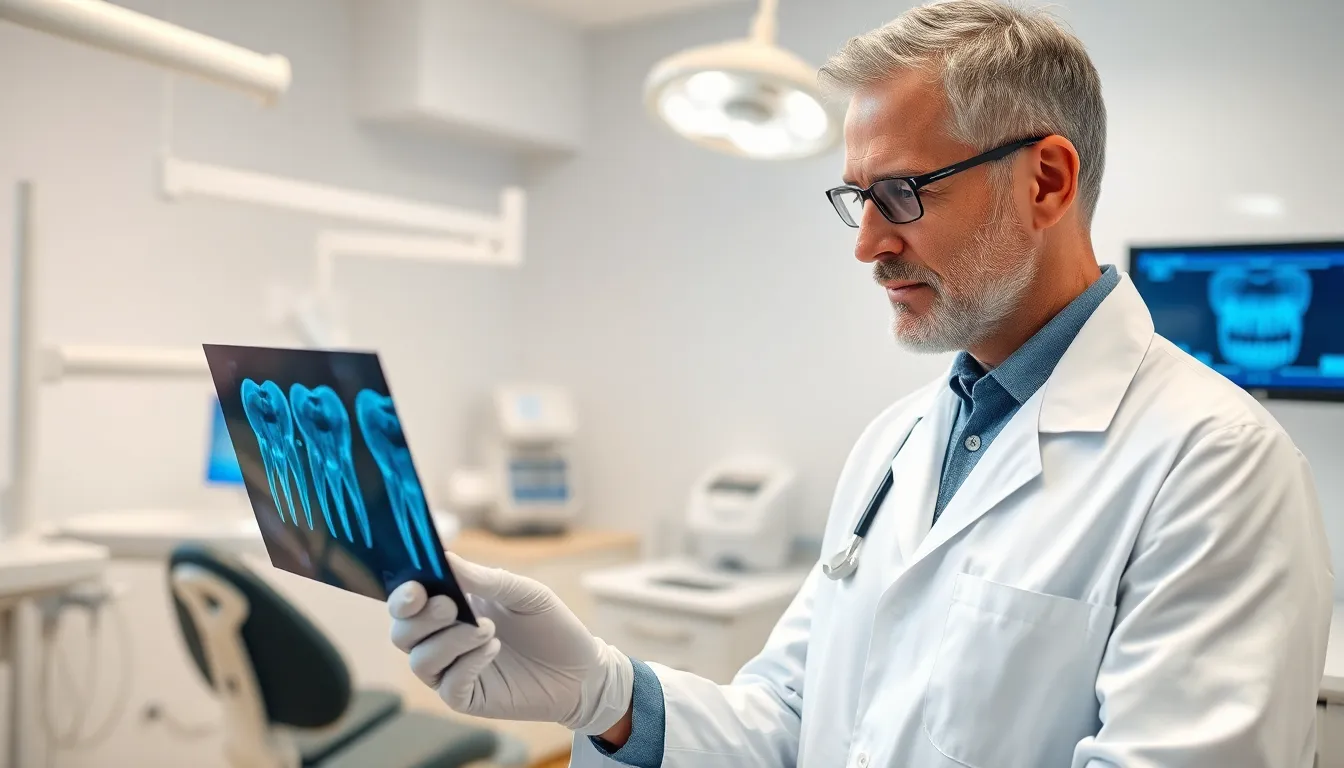Have you ever wondered if a dead tooth will fall out on its own? That nagging discolored tooth might have you concerned about what happens next and whether you’ll need professional intervention.
A dead or non-vital tooth occurs when the blood supply to the tooth is cut off, causing the pulp inside to die. While some assume these teeth will eventually loosen and fall out naturally, the reality is more complicated. Unlike baby teeth that have a predetermined lifecycle, adult teeth—even dead ones—don’t automatically eject from your mouth. Understanding what happens to a dead tooth and the treatment options available can help you make informed decisions about your dental health.
Understanding Dead Teeth: What Happens When a Tooth Dies
A dead tooth occurs when the dental pulp inside your tooth no longer receives blood flow. This pulp contains nerves, blood vessels, and connective tissue that keep your tooth alive and healthy. Once the blood supply is cut off, the pulp tissue dies, resulting in what dentists call a “non-vital” or “necrotic” tooth.
Causes of Tooth Death
Trauma to your tooth often leads to pulp death when blood vessels rupture or become severed. Physical injuries like sports accidents, falls, or car crashes can damage these delicate structures. Severe decay represents another common cause, as bacteria from untreated cavities eventually reach the pulp, causing infection that restricts blood flow. Repetitive dental procedures on a single tooth sometimes damage the pulp beyond repair, particularly when multiple fillings or restorations are needed over time.
“I had a patient who ignored a cracked tooth for months after a biking accident,” explains Dr. Todd B. Harris. “By the time he came in, the tooth had already died and developed an abscess. Had he sought treatment immediately after the injury, we might have been able to save the pulp.”
Signs Your Tooth May Be Dead
Pain often serves as the first indicator of a dying tooth, ranging from mild sensitivity to severe throbbing. Discoloration appears as another telltale sign—dead teeth typically darken to yellow, gray, or black as the internal tissue decomposes. Swelling around the affected tooth signals your body’s response to infection, while bad breath or a foul taste develops from bacterial buildup. Temperature sensitivity frequently decreases as nerve tissue dies, making your tooth less responsive to hot or cold stimuli than surrounding healthy teeth.
The Internal Process of Tooth Death
Pulp inflammation (pulpitis) marks the initial stage when your tooth sustains damage or infection. During this phase, blood flow increases as your body attempts to fight infection, causing painful pressure inside the confined pulp chamber. Necrosis follows when inflammation overwhelms the pulp, cutting off blood supply and killing the tissue. Bacteria then multiply within this dead tissue, creating toxins that seep through tiny tubules in your dentin and into the surrounding bone. Abscess formation represents the final stage—a pocket of pus develops at the tooth root as your immune system battles the spreading infection.
Why Dead Teeth Don’t Naturally Fall Out
Adult teeth remain anchored in your jawbone through periodontal ligaments that connect the tooth root to the socket. These ligaments stay intact even after pulp death, keeping your tooth firmly in place. Bone support around your tooth root continues even though internal death, as surrounding bone tissue receives blood supply independently from the tooth pulp. Cementum covering the tooth root maintains its connection to periodontal ligaments regardless of pulp status.
Dead teeth only loosen when untreated infection spreads to surrounding structures, destroying periodontal ligaments and eroding bone support—a process that takes months or years rather than occurring automatically after pulp death.
Signs and Symptoms of a Dead Tooth
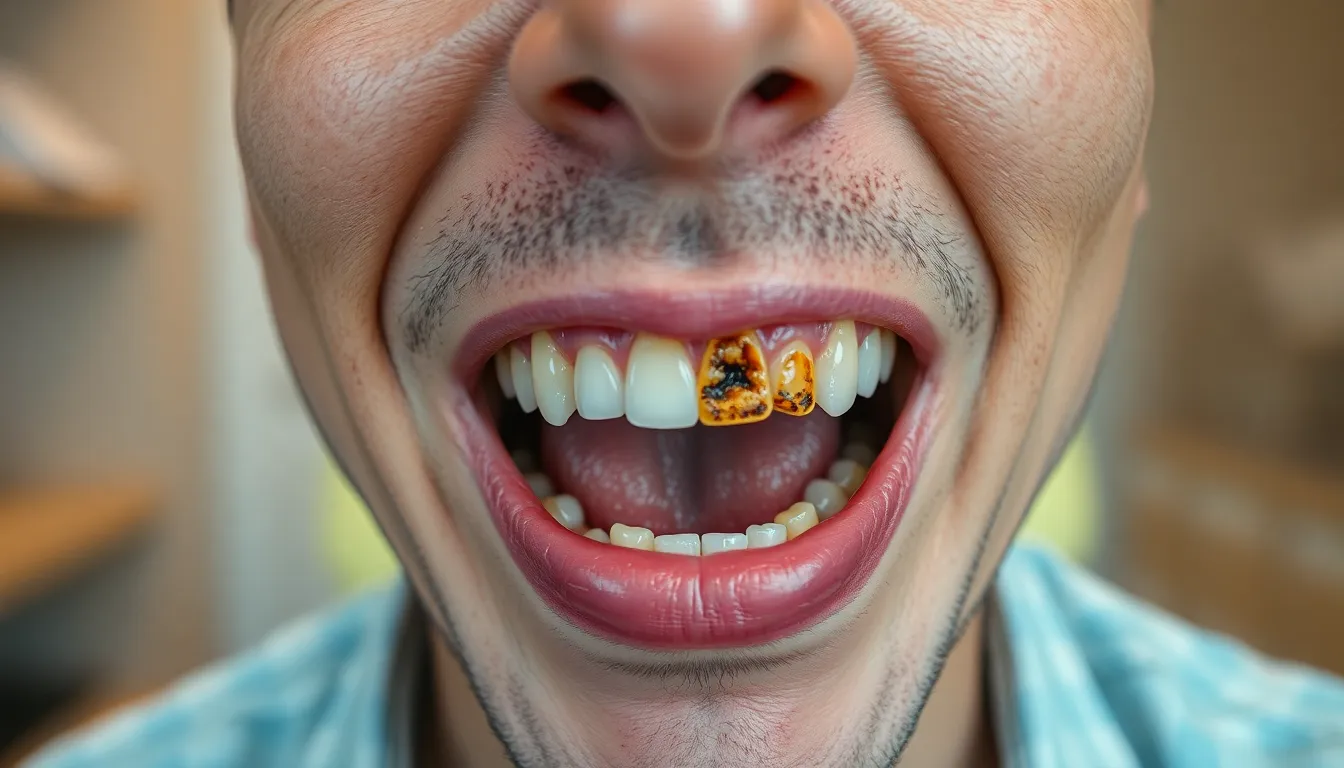
Recognizing the signs of a dead tooth early helps prevent further complications and enables timely treatment. When a tooth dies, several noticeable changes occur that serve as warning signals requiring dental attention.
Pain and Discoloration
Pain often accompanies the initial stages of tooth death as inflammation develops in the pulp due to bacterial infection. You’ll typically experience intense discomfort during this phase, though the pain may gradually subside as the nerve completely dies. Discoloration represents one of the most visible indicators of a dead tooth, with the affected tooth turning yellow, gray, or black over time. This color change occurs because of the breakdown of red blood cells inside the tooth structure. Many patients report watching their tooth darken progressively over weeks or months following trauma or infection.
Dr. Todd B. Harris notes, “I’ve treated many patients who initially ignored slight discoloration, only to seek help when the tooth had turned significantly darker. By then, the infection had often progressed considerably, making treatment more complex.”
Sensitivity Changes
A dead tooth displays distinctive sensitivity patterns compared to healthy teeth. You’ll notice decreased responsiveness to temperature changes as the nerve dies, meaning hot or cold foods no longer trigger the same reaction in that exact tooth. Surrounding areas, but, might become increasingly sensitive due to infection or swelling developing around the dead tooth. The contrast between the dead tooth’s lack of sensation and potential heightened sensitivity in adjacent tissues often confuses patients about what they’re experiencing.
Will a Dead Tooth Fall Out on Its Own?
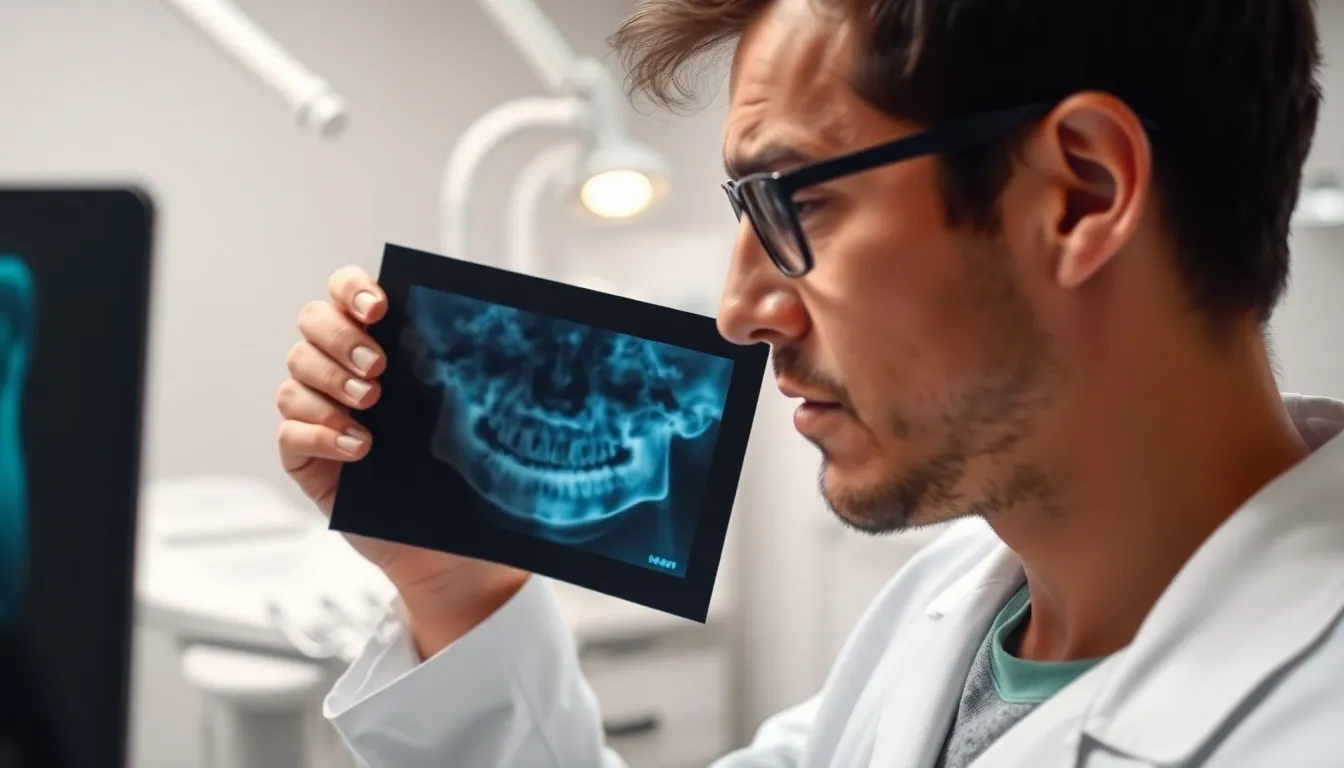
A dead tooth can eventually become loose and fall out naturally, but this process is typically prolonged and unpredictable. Dental professionals refer to these as “pulpless” or “necrotic pulp” teeth, which have lost their blood supply due to decay or trauma.
Natural Shedding Process
The body initiates a response to dead teeth by gradually resorbing the bone and tissue that once supported the tooth structure. This resorption weakens the attachment between your tooth and the surrounding gum and jawbone, leading to progressive loosening. The timeline for natural shedding varies significantly—ranging from days to months—and comes with considerable risks. During this waiting period, you’re vulnerable to pain, discomfort, and potential infection that can spread to neighboring teeth and tissues.
Dr. Todd B. Harris recalls a patient who decided to “wait out” a dead front tooth: “She came in with severe facial swelling after ignoring the darkening tooth for months. By then, the infection had spread to surrounding tissues, requiring emergency treatment and eventually losing not just the dead tooth but damaging adjacent teeth as well.”
Factors That Influence Tooth Stability
The stability of a dead tooth depends on several key variables that determine how quickly it might loosen or fall out. Infection severity directly impacts the surrounding bone and gum tissue integrity—more extensive infections accelerate bone loss and destabilization. Periodontal health plays a crucial role, as existing gum recession or bone loss from periodontal disease weakens tooth support structures faster.
Previous dental treatments significantly affect tooth retention. A dead tooth that has undergone root canal therapy maintains its structural integrity longer than an untreated one. Your overall oral hygiene practices and the health of surrounding tissues create the environment that either preserves or hastens tooth loss.
Rather than waiting for natural shedding, dental professionals recommend prompt intervention through either root canal therapy to save the tooth or extraction if the tooth is beyond repair. This proactive approach prevents complications like infection spread, pain, and damage to adjacent teeth while giving you control over your treatment timeline and outcome.
Complications of Untreated Dead Teeth
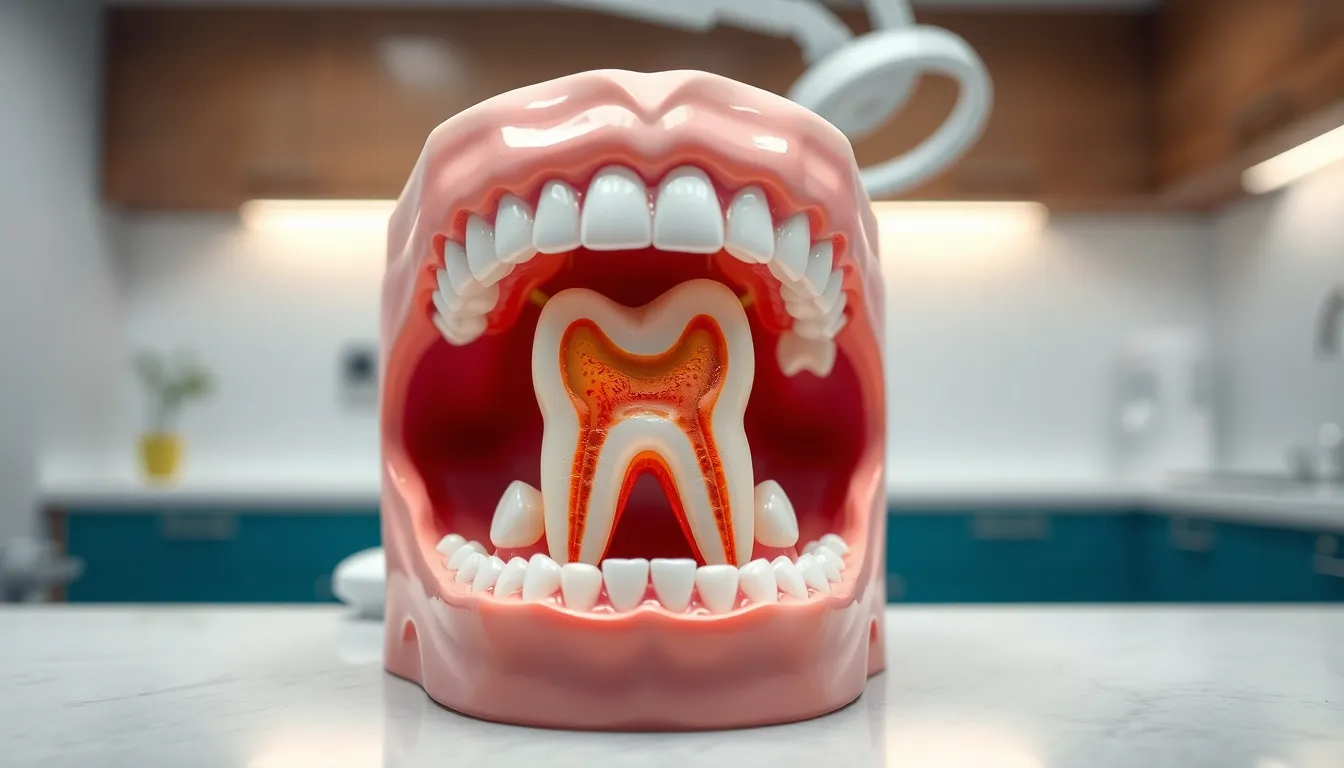
Leaving a dead tooth untreated invites a host of serious dental complications that extend beyond the affected tooth itself. These complications can significantly impact your overall oral health and quality of life if not addressed promptly.
Infection and Abscess Formation
Dead teeth become breeding grounds for bacterial infections due to the lack of blood supply to fight off pathogens. Once bacteria penetrate the pulp chamber of a dead tooth, they multiply rapidly, creating pus-filled pockets called abscesses at the root tip. These infections can spread to surrounding tissues, causing facial swelling, severe pain, and even systemic health issues if bacteria enter your bloodstream. Dr. Todd B. Harris notes, “I’ve seen patients delay treatment until they develop facial swelling and fever, turning what could have been a simple procedure into an emergency situation requiring antibiotics and immediate intervention.”
Impact on Surrounding Teeth
A dead tooth threatens the stability of adjacent teeth in multiple ways. Bacterial infections from the dead tooth can spread to neighboring teeth, compromising their health and structure. Bone loss commonly occurs around the dead tooth’s root, weakening the foundation for surrounding teeth and potentially causing them to shift or become loose. Your bite alignment changes when teeth begin to drift into the space created by a deteriorating dead tooth, leading to uneven force distribution when chewing. Many patients report increased sensitivity in teeth adjacent to the dead tooth, as these teeth bear additional pressure during normal function.
Treatment Options for Dead Teeth

When a tooth dies, you have two primary options to address the condition. Dental professionals recommend addressing dead teeth promptly rather than waiting for them to fall out naturally, as treatment prevents complications and gives you control over the outcome.
Root Canal Therapy
Root canal therapy offers a way to save your dead tooth while eliminating the infection inside it. During this procedure, dentists remove the necrotic pulp tissue, thoroughly clean and disinfect the inner chambers, and seal the space to prevent future bacterial invasion. The treatment preserves your natural tooth structure while resolving pain and stopping infection from spreading to surrounding tissues. Many patients fear root canals due to outdated perceptions, but modern techniques and adequate anesthesia make the procedure much more comfortable than dealing with the consequences of an untreated dead tooth.
Dr. Todd B. Harris explains, “Patients often come in thinking they need an extraction when a root canal could save their tooth. I recently treated a patient who had been putting off treatment for months because of the dark discoloration in her front tooth. After root canal therapy and internal bleaching, she was amazed that her natural tooth could be saved and restored to its original appearance.”
Extraction Procedures
Extraction becomes necessary when your dead tooth is too damaged, severely infected, or structurally compromised beyond what a root canal can repair. Dental professionals perform extractions to prevent the spread of infection and alleviate pain when restoration isn’t viable. The procedure involves completely removing the tooth from its socket, which eliminates the source of infection and creates an opportunity for replacement options.
After extraction, you have several replacement alternatives to restore both function and aesthetics, including dental implants, bridges, or removable partial dentures. Implants provide the most natural-feeling replacement by mimicking the root structure of your natural tooth, while bridges use adjacent teeth for support without requiring surgery. The extraction site typically heals within 7-10 days, though complete bone healing may take several months if you’re considering implant placement.
Treatment timing plays a crucial role in determining outcomes for dead teeth. Early intervention through either root canal therapy or extraction helps minimize complications and preserve more treatment options for your long-term dental health.
Preventative Measures to Protect Your Teeth
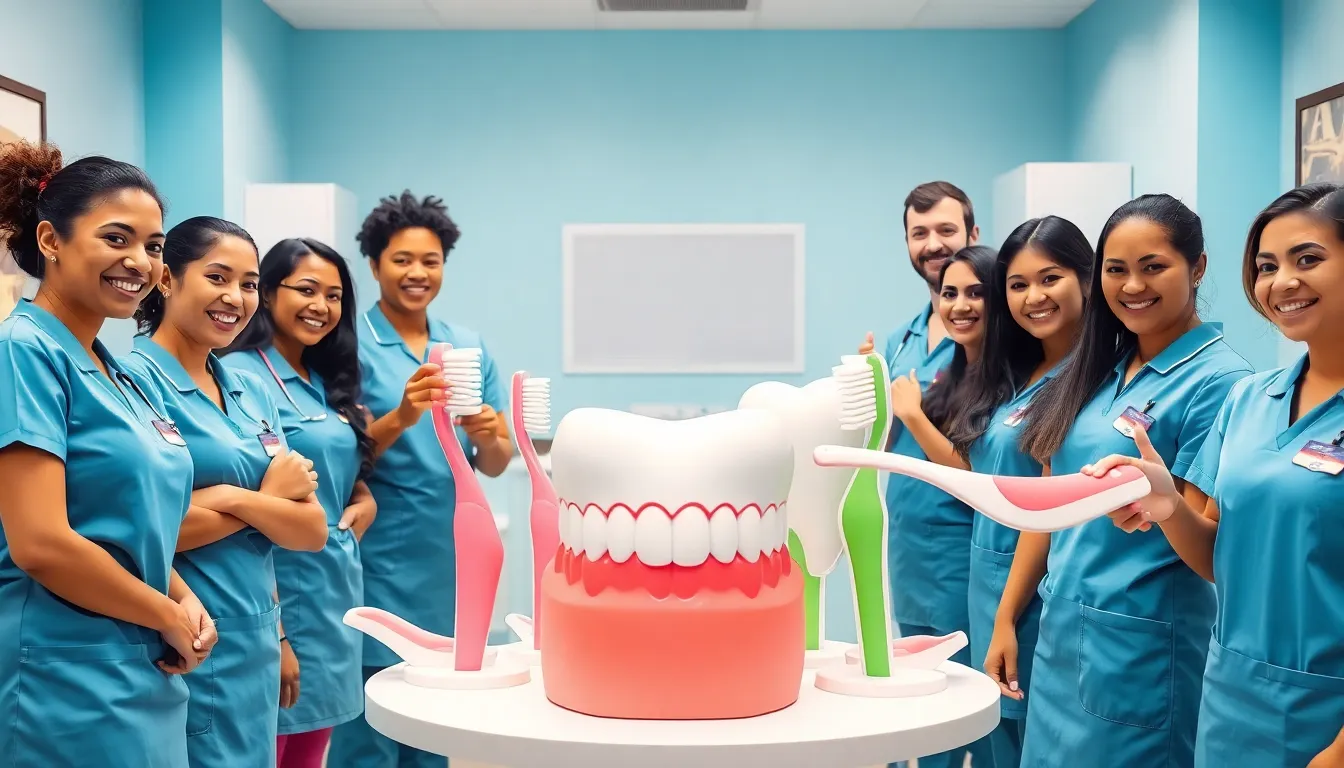
Maintaining good oral hygiene forms the foundation of preventing dead teeth. Brush your teeth twice daily with fluoride toothpaste and floss at least once daily to remove plaque and bacteria that can lead to cavities. Regular dental check-ups every six months allow dentists to detect early signs of decay before they reach the pulp and cause irreversible damage.
Wearing protective mouthguards during contact sports or activities protects your teeth from trauma that could damage nerves and blood vessels. Prompt treatment of cavities prevents bacteria from penetrating deeper into the tooth structure where they can infect the pulp. Addressing teeth grinding (bruxism) with a night guard helps prevent excessive wear that might compromise enamel and expose inner tooth structures.
“I’ve seen countless patients who could have avoided root canals if they’d addressed small cavities earlier,” notes Dr. Todd B. Harris. “One patient ignored a small cavity for over a year, and by the time she came in with pain, the infection had reached the pulp, requiring immediate intervention to save the tooth.”
Limiting sugary foods and acidic beverages reduces the risk of enamel erosion and decay. Rinsing your mouth with water after consuming acidic foods helps neutralize acids before they damage tooth enamel. Avoiding habits like chewing ice or using teeth as tools prevents fractures that could expose the pulp to bacteria.
Addressing dry mouth conditions through adequate hydration or specialized products helps maintain the protective functions of saliva. Quitting tobacco use significantly improves oral health, as smoking and chewing tobacco contribute to gum disease and reduced blood flow to teeth.
By implementing these preventative measures consistently, you’ll significantly reduce your risk of developing dead teeth and avoid the complications associated with tooth necrosis.
Living With a Dead Tooth: What to Expect
A dead tooth changes your daily experience in several noticeable ways. The discoloration often progresses gradually, starting with a yellowish tint that evolves to gray or even black as red blood cells break down inside the tooth. Many patients report feeling self-conscious about this visible change, especially when it affects front teeth.
Pain patterns vary considerably with dead teeth. Initially, you might experience sharp, intense discomfort as the pulp becomes inflamed and infected. This acute pain typically subsides once the nerve dies completely, creating a false sense that the problem has resolved itself. Surrounding tissues, but, often become more sensitive due to the spreading infection.
Infections from dead teeth present in predictable stages. The bacteria multiply inside the pulpless chamber, eventually forming an abscess that causes swelling in the gums near the affected tooth. This swelling may come and go, but each recurrence typically grows more severe and painful than the last. Bad breath and a persistent unpleasant taste in your mouth frequently accompany these infections.
“I’ve seen patients try to manage a dead tooth for months before seeking treatment,” notes Dr. Todd B. Harris. “By then, what could have been a straightforward root canal procedure often becomes more complicated, sometimes requiring extraction because the infection has damaged surrounding structures.”
Your bite mechanics change subtly when living with a dead tooth. The tooth becomes increasingly brittle over time, making it prone to chipping or cracking during normal eating. You might unconsciously avoid chewing on that side of your mouth, creating uneven pressure that can lead to jaw discomfort and headaches.
Daily oral hygiene becomes more challenging around a dead tooth. The area tends to be more sensitive to brushing, and food particles may collect more easily around the affected tooth if swelling has created deeper pockets in the surrounding gum tissue. These factors combine to create an environment where further bacterial growth thrives.
Conclusion
A dead tooth won’t simply fall out on its own like a baby tooth. While it may eventually loosen over time due to bone resorption and infection the process is unpredictable and can lead to serious complications.
Don’t wait for nature to take its course. Seeking prompt professional treatment through root canal therapy or extraction is essential to prevent infection spread bone loss and damage to adjacent teeth.
Remember that preventative care is your best defense. Regular dental check-ups good oral hygiene habits and prompt attention to dental injuries can help you avoid the pain discomfort and aesthetic concerns associated with a dead tooth.
Your smile deserves proactive care rather than reactive treatment. Take control of your dental health today.
Frequently Asked Questions
What is a dead or non-vital tooth?
A dead or non-vital tooth occurs when the blood supply to the tooth is cut off, causing the pulp inside to die. This can happen due to trauma, severe decay, or repetitive dental procedures. Unlike baby teeth, adult dead teeth don’t automatically fall out because they remain anchored to the jawbone through periodontal ligaments, even after the pulp dies.
What are the signs of a dead tooth?
Signs of a dead tooth include pain (especially during early stages), discoloration (yellow, gray, or black), swelling around the affected area, bad breath, and decreased sensitivity to temperature changes. While the dead tooth itself becomes less sensitive, surrounding areas may become more sensitive due to infection or inflammation.
Will a dead tooth fall out on its own?
While a dead tooth can eventually become loose and fall out naturally, this process is typically prolonged and unpredictable, taking anywhere from days to months or even years. This natural shedding comes with risks such as pain, discomfort, and potential infection spread to neighboring teeth and tissues.
What happens if a dead tooth is left untreated?
Untreated dead teeth can become breeding grounds for bacterial infections, leading to abscess formation and potential systemic health issues. Infections can spread to surrounding teeth and bone, causing further tooth loss and bite alignment problems. Emergency situations may arise from delayed care, complicating what could have been straightforward treatment.
What are the treatment options for a dead tooth?
The two primary treatment options are root canal therapy and extraction. Root canal therapy preserves the natural tooth by removing the necrotic pulp, cleaning the inner chambers, and sealing the space. Extraction becomes necessary when a tooth is too damaged for restoration and allows for replacement options like dental implants, bridges, or dentures.
How can I prevent developing a dead tooth?
Prevent dead teeth by maintaining good oral hygiene (brushing twice daily with fluoride toothpaste and flossing), attending regular dental check-ups, wearing protective mouthguards during sports, treating cavities promptly, addressing teeth grinding, limiting sugary and acidic foods, managing dry mouth, and quitting tobacco use.
How does living with a dead tooth affect daily life?
Living with a dead tooth can affect your self-confidence due to progressive discoloration. Pain patterns vary, often creating a false sense of resolution as the nerve dies. The tooth becomes brittle and prone to damage, affecting bite mechanics. Daily oral hygiene becomes complicated due to increased sensitivity and food accumulation around the affected area.
Can a dead tooth be saved?
Yes, a dead tooth can often be saved through root canal therapy if treated promptly. This procedure removes the dead pulp, cleans the inner chambers, and seals the space to prevent future infections. Early intervention increases the chances of saving the tooth and preserving its natural structure rather than requiring extraction.

